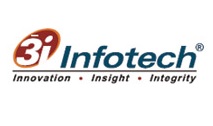Dell Technologies shares top Edge Computing trends and opportunities for 2022
The ‘do anything from anywhere’ economy requires a highly complex IT system, capable of managing the exponential data that it generates. Emerging technologies like Edge computing, 5G, artificial intelligence (AI) and machine learning (ML) are accelerating both the discovery of insights from data and the digitization of key business processes. In the modern era of Edge Computing, compute platforms at the Edge will provide lightweight designs that can be successfully deployed despite spatial, environmental, power, and connectivity constraints. These designs can be secured and can support applications that require insights in real time, enabling businesses to provide enhanced experiences to their customers.
5G implementation is also playing a vital role in edge data center investments in India, and in 2022 we expect to see consumption-based models, edge computing, and a multi-cloud environments flourish. As IT infrastructure becomes more distributed, Dell’s focus will remain on simplifying and modernizing, while reducing infrastructure costs.
What to look for in 2022
Competitive ‘Edge’ for Data Management:
As digital transformation continues across industries, modern data management is set to change. Most of the world’s data is expected to move out of the public cloud environment where non-real-time, centralized data was being managed. We anticipate that the entire data management ecosystem will develop and utilize edge IT capacity at the ingress and egress of their data pipelines, and remotely process and digest data on the edge. As the data management ecosystem extends to the edge, the number of edge workloads will continue to grow dramatically, and data management will become a new class of workload.
Software-defined Edge
In 2022 we expect edge platforms to become more capable and pervasive, with workloads and even public cloud edge shifting to software-defined architectures. The combination of modern edge platforms and software-defined edge systems will be considered the best method for edge deployment in multi-cloud environments. Moreover, software defined edge workloads will help organizations avoid unmanageable edge infrastructure sprawl that could result if each edge workload created its own dedicated platform.
As enterprises begin to deploy their data, IoT and application pipelines to the edge, software-defined packages that leverage common edge platforms of IT capacity, will offer advantages of speed, economy and efficiency as they utilize an underlying platform of stable capacity. Dell Technologies currently offers edge platforms for all the major cloud stacks, using common hardware and delivery mechanisms.
Bottom-line
The future looks bright for edge computing as devices get smarter and computers run more complicated calculations and send more data. Edge computing satisfies the growing demand for quick and secure access to data, in the exact way that companies and consumers want it.
Currently, Edge computing integrating AI, IoT, and 5G, is expected to fetch added value to business outcomes. Harnessing the value of data with edge computing will not only lower workloads but optimize networks and services to deliver flexible offerings to customers. The dependence on internet-connected devices will increase, helping companies to excel in this competitive environment.
Authored by:- Mr. Srinivas Rao, Senior Director, System Engineering, Dell Technologies, India
(The views expressed in this article are by – Mr. Srinivas Rao, Senior Director, System Engineering, Dell Technologies, India. Technuter.com doesn’t own any responsibility for it.)



